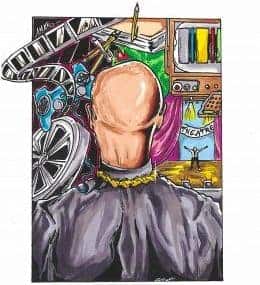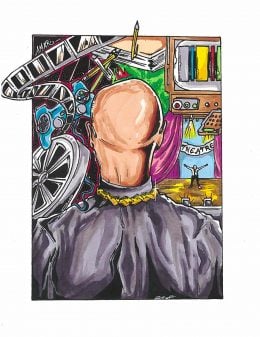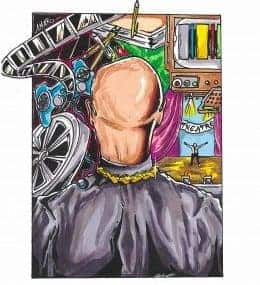A Ballerina’s Tale – Overview/ Review (with Spoilers)
Overview To begin, A Ballerina’s Tale is not a full coverage of Misty Copeland’s life from birth to her becoming the principal dancer at the American Ballet Theater. It is more so an overview of her professional career, with a strong feature on the history of Ballet, as well as Black women’s role in the…

Spoiler Alert: This summary and review contains spoilers.
Additionally, some images and text may include affiliate links, meaning we may earn a commission or receive products if you make a purchase.
Overview
To begin, A Ballerina’s Tale is not a full coverage of Misty Copeland’s life from birth to her becoming the principal dancer at the American Ballet Theater. It is more so an overview of her professional career, with a strong feature on the history of Ballet, as well as Black women’s role in the art form.
Characters & Story (with Commentary)
At the center of the movie, naturally, is Misty Copeland. A young woman who began her practice of ballet at 13, which is considered late in the art form, and even within the modern age, faced great prejudice. Not in a similar fashion to her predecessors, like the visibly seen Raven Wilkinson, but between being a Black woman, as well as not fitting into George Balanchine’s vision of the perfect ballerina [1], a lot of her professional career was an uphill battle.
Of which, even with video documents, is not really seen. Which isn’t to say Copeland’s struggle isn’t documented, but more so title cards will let you know what happens rather than you seeing the blood, sweat, and tears which come from dance practice or her having what could have been a career-ending surgery. Nonetheless, in this overview of Copeland’s career, you will learn about her, her profession, and though she is being touted as the first Black women in many areas of ballet, the film makes sure to pay homage, and have predecessors seen, so that anyone watching will see there is a community, and Copeland isn’t just an exception.
Highlights
Though I have gone to ballets before, and likely will again in the future, I am not someone who knows all the technical terms, nor the history. Within A Ballerina’s Tale, however, a basic overview, or rather foundation, is given so that you are made aware just enough without being overwhelmed. Now, as for what is covered, the origins of ballet in Europe, the racial history of ballet, and then comes George Balanchine and how he changed ballet. All leading up to Misty, as well as her predecessors, also shifting time and history.
I liked the fact Misty was given her title within “The First Black…” but made it a point to not make it all about her. She has her title, but wants to make sure you know who Raven Wilkinson is, wants you to be familiar with the other people who, even if they don’t get the credit she is getting, did pave the way so that Misty didn’t have the full-on loneliness which comes from being the first non-white person in an industry.
Within the film it features multiple instances of her performances caught on film, which I enjoyed since we see her practice so much, and even see post-surgery, so to see how much talent, focus, and drive she has really pushed multiple ideas. The first being: ballet is no joke. Which was something I knew already from knowing someone who practices the art form, but with physically seeing, through an X-ray, the damage it did on Copeland’s body, hearing what many would consider horror stories from other ballerinas, and Copeland pushing the idea her pain tolerance is almost superhuman, to not leave the film respecting the madness and love these performers have, I think would be impossible.
Lastly, I have to say I loved the film directly addressing race, and showing Black women having comradery. For while I’m not a social justice warrior, nor that heavy into policing how people, and especially Black women, should act, it is nice to see professional women, of various backgrounds, come together for someone like Copeland, and something like ballet. For among the representation Copeland brings to ballet, I also believe that the film brings the idea that just as she shouldn’t be alone on stage, no Black person, or person of color in general, should feel they will be alone in the audience. For while, as one of her supporters note, there perhaps aren’t a lot of men interested in the art form, that is changing.
Low Points
Being that we are told Copeland is one of 6, I did find it odd that we don’t see any member of her family throughout the movie. For while I do feel we get a strong introduction to her professional life, her personal life is almost completely absent. Which I’m sure maybe welcomed to some since what they really may care about is her career, but what is fractured about this film is that, even with knowing what she has gone through, I do feel at times I was watching a narrated Wikipedia article.
This is mostly due to there being very few emotions visibly on screen. I mean, excuse me if I like the dramatics, but with Copeland, I guess wanting to be a beacon of hope, you’d think she would have visually shared more of her pain. Which isn’t me asking for us to have seen her get surgery or anything like that, but I do feel she is portrayed more so as an ideal than a real person.
On The Fence
With the large amount of people we are introduced to, I did wish that the name cards would have appeared more than once. For while I latched onto who her manager was, there were other names in there which I thought would have just had one segment and never be seen again, and when they popped up later in the film I struggled to remember who they were.
Piggybacking off that criticism, another thing I wished was more in the film was her having conversations. A lot of it seems so staged and interview style that, on top of her seeming like some ideal, it made her seem almost like Beyoncé in a way. As in, everything is tightly controlled and manufactured for consumption, that nothing seems real or raw. You see what you are meant to see and hear what you are meant to hear, and nothing which doesn’t imply perfection and the most marketable person around will get to you without someone breaking Copeland’s trust.
Overall: Worth Seeing
Let me start off by admitting that this isn’t like the majority of the films placed within the “Worth Seeing” label. For one, this isn’t something I think is of universal interest, nor is on the level for a non-ballet fan to suddenly take an interest. For while Copeland is charismatic, and surely this documentary will make for a good foundation in case her life is even dramatized, there remains this feeling that it belongs in a niche. Likely because, between the topic of ballet, as well as Black women in the medium, it seems finely focused. To the point, the film acts as more of a presentation on representation than us truly getting to know Copeland, those who came before her, or even those who supported her. For, as stated, with the absence of her family, and more so people speaking about her than with her throughout the movie, there is a bit of disconnect when it comes to this being about Copeland. Though, I would argue, while this film disappoints in truly getting to know Copeland past her smiling façade, at the very least if you know a young Black child, or a young girl of color, who is interested in the art form, at the very least the film lets her know she isn’t alone, and the possibilities are endless.
Things To Note
[1]: From what we are told by Deirde Kelly, Mr. Balanchine seemingly transformed the ballet world from perhaps ballerina’s having normal bodies, which are made to do all a ballerina does, to them looking pre-pubescent, pale, and perhaps fitting of what would reinforce Eurocentric ideals.

